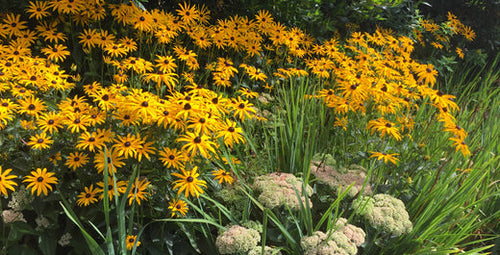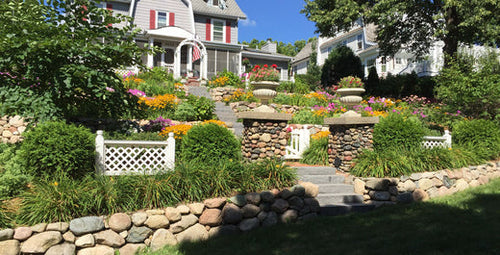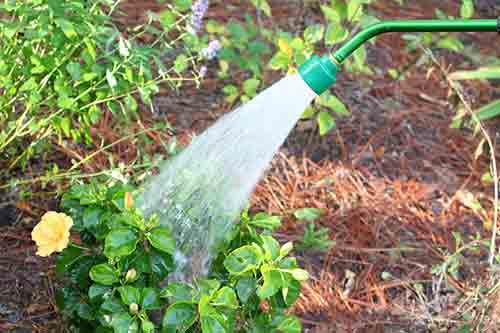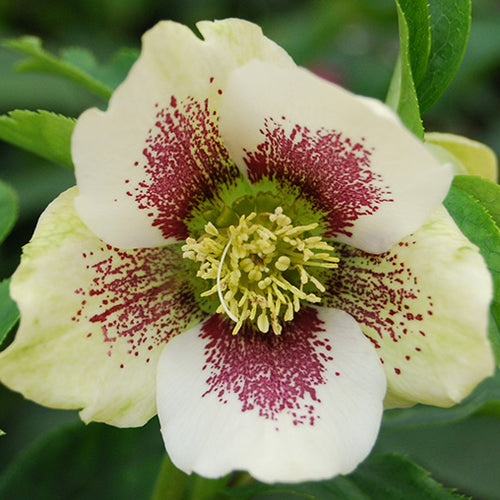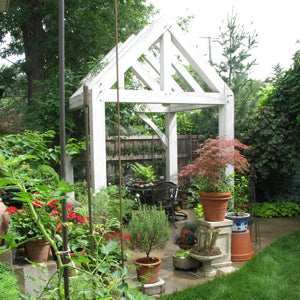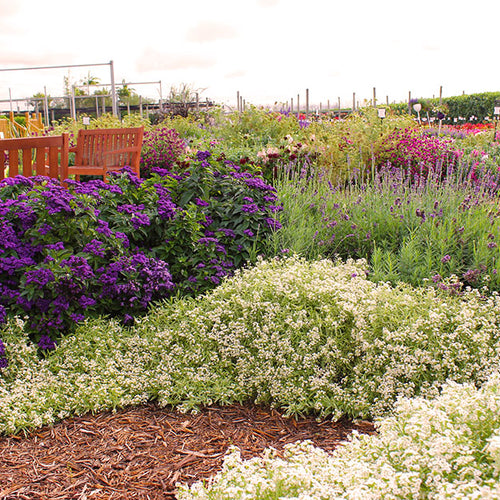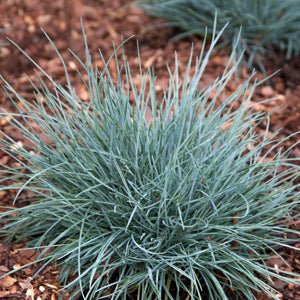Growing up in the Midwest, I didn’t really have an appreciation for ornamental grasses in landscaping. When I’d see
them, they’d just remind me of what I saw along the sides of the highway. But once I started designing gardens, I better
understood grasses and what they bring to the garden. Here are my five favorite reasons to go with grasses in your
yard.

Japanese forest grass (Hakonechloa macra ‘Aureola’) is a low-growing ornamental that thrives in shade and offers bright chartreuse foliage that practically glows.
Little bluestem (Schizachyrium scoparium) is a tough-as-nails North American native ornamental grass that has silvery-blue-green leaves all spring and summer, then puts on an eye-catching show in fall.
Miscanthus has a lush look with its fine grass blades that shoot up from the soil, then gently arc up and out, like a fireworks display.

Ornamental Grasses Add Texture
I can appreciate the look of ornamental grasses in the prairie, but I love the way they act as punctuation
marks in the garden and landscape. Their texture creates a delightful contrast against most annuals and
perennials. Switch grass (Panicum), for example,
adds a fluffy, frothy look to coneflowers, black-eyed Susans, and heleniums. Upright feather reed grass looks amazing
paired with mounding perennials like baptisia.
There’s a Wide Variety
It’s easy to make the mistake of thinking all ornamental grasses look pretty much the same. At first glance, they do, but when you pay a touch more attention (and pair them with the right plants), you discover there’s a whole world to choose from. For example:Japanese forest grass (Hakonechloa macra ‘Aureola’) is a low-growing ornamental that thrives in shade and offers bright chartreuse foliage that practically glows.
Little bluestem (Schizachyrium scoparium) is a tough-as-nails North American native ornamental grass that has silvery-blue-green leaves all spring and summer, then puts on an eye-catching show in fall.
Miscanthus has a lush look with its fine grass blades that shoot up from the soil, then gently arc up and out, like a fireworks display.
They Add Color
Just because they’re grasses doesn’t mean they look like giant versions of what’s growing in your lawn. Ornamental grasses run the spectrum from variegated to green, and even red or purple. In fact, purple fountain grass (Pennisetum setaceum ‘Rubrum’) is among the most popular of all grasses thanks to its richly colored foliage. Pennisetum 'Burgundy Bunny' is a delightful hardier perennial version, shown here in the photo. Zebra grass (Miscanthus sinensis ‘Zebrinus’) features mid-green blades banded with creamy-gold stripes. And blue fescue (Festuca glauca ‘Elijah Blue’) bears silvery foliage that looks good with anything you plant it with.Ornamental Grasses Create Winter Interest
Some ornamental grasses do a great job of staying upright in the winter, so you can enjoy their texture even when other plants have gone dormant. And many, including fountain grass and native switch grass, provide seeds to feed birds in the winter.You Can Use them in Container Gardens or Landscapes
They’re so versatile that you can include ornamental grasses effectively in container gardens, as well as your landscape beds and borders. In fact, one easy way to get a super-cool look is to use some of the same grasses in pots on your front porch, patio, or deck as you have growing in your yard.Written by Justin Hancock










